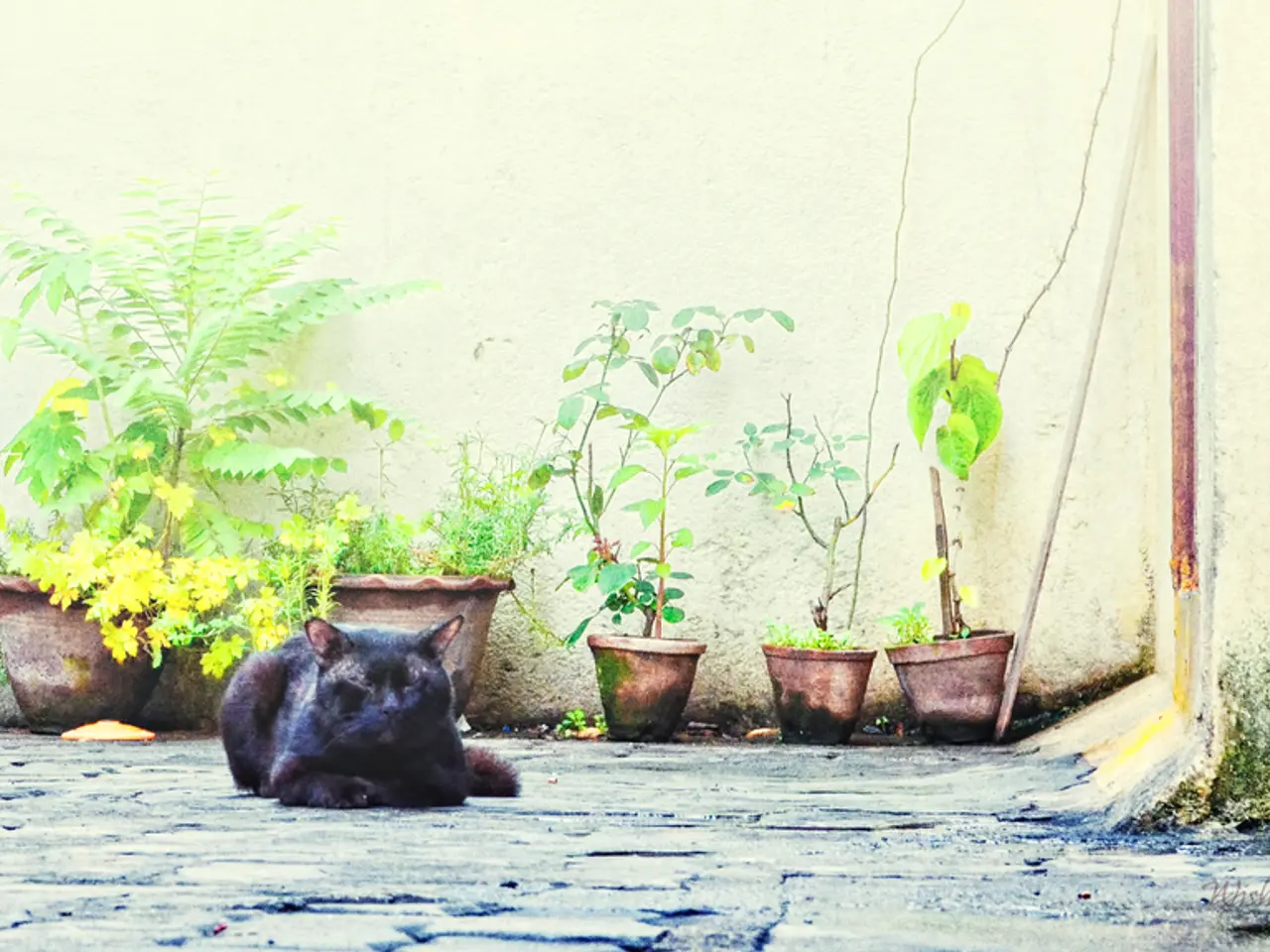Harmful Greenery for Felines: A Guide to Poisonous Vegetation for Cats
In a cat-friendly garden, safety and feline happiness go hand in hand. However, many common garden plants can pose a threat to our feline friends if ingested. Poppies, for instance, can cause symptoms of poisoning such as dilated pupils, difficulty walking, lack of appetite, coma, and potentially severe harm or death. Marigolds, on the other hand, may cause mild stomach upset and skin irritation, but their pot variety, Calendula, is not toxic to cats.
Unfortunately, many common garden plants contain toxic elements that could be harmful to cats. To make a garden safe for cats, it's crucial to eliminate toxic plants and choose non-toxic alternatives.
Start by removing or avoiding planting known toxic species, especially lilies and sago palms which are highly dangerous to cats. These plants can cause severe symptoms ranging from vomiting, drooling, oral swelling, difficulty swallowing, tremors, to potentially fatal liver damage depending on the species.
Next, choose pet-safe plants confirmed by credible sources such as the ASPCA. Examples include the spider plant, Boston fern, and similar non-toxic options that thrive indoors or outdoors depending on climate.
Creating a physical barrier such as fencing or garden netting can also help restrict your cat’s access to areas where toxic plants might be present. Using cat-safe ground covers and grasses can encourage natural feline behaviours without risk.
Educating all household members and visitors about toxic plants is also important to avoid accidental exposure. When in doubt, consult a veterinarian or a trusted horticulturist familiar with pet safety before adding new plants to your garden.
In summary, a combination of eliminating toxic plants and selecting non-toxic replacements offers the safest environment for cats outdoors as well as indoors. For a complete list of plants that have varying levels of toxicity to cats, see the Cats Protection factsheet.
It's important to remember that even non-toxic plants can cause problems if consumed in large quantities. Always seek veterinary advice immediately if you suspect your cat has eaten part of a toxic plant. Commonly toxic plants include lilies, aloe vera, sago palm, philodendron, pothos (devil’s ivy), dieffenbachia (dumb cane), peace lily, azaleas, oleander, foxgloves, daffodils, chrysanthemums, and poinsettia, among others.
Cats may come into contact with lily pollen by rubbing against it and then licking their fur, posing a risk of poisoning. Mistletoe poisoning is most likely to occur at Christmas, with symptoms including drooling, upset stomach, difficulty walking, low blood pressure, seizures, and even death.
By following these guidelines, you can create a beautiful, safe, and cat-friendly garden that both you and your feline friend can enjoy.
Read also:
- Reduced Scope 1 emissions of Airbus due to the use of Sustainable Aviation Fuel
- Unveiling of Advanced Ochre Tools Uncovers Complicated Early Human Craftsmanship
- Financial Management Operations (FMO) spearheads a €130 million syndicated loan for QNB Leasing, a Turkish financial institution.
- At the age of 75, finding life monotonous, she decided to take on a new role as a foster mother.




